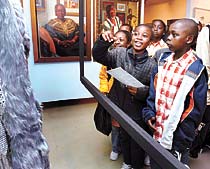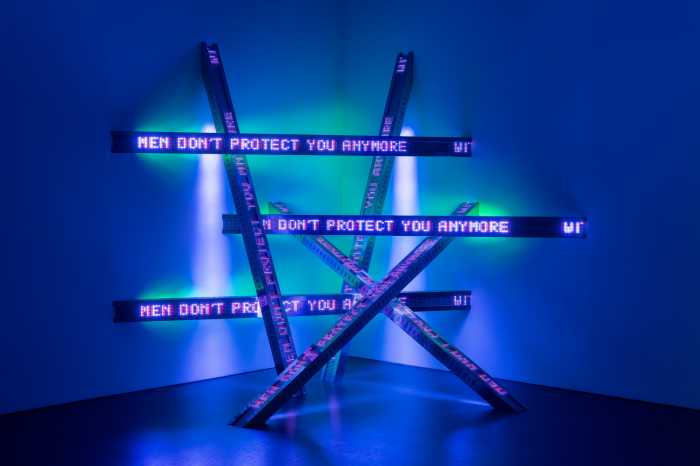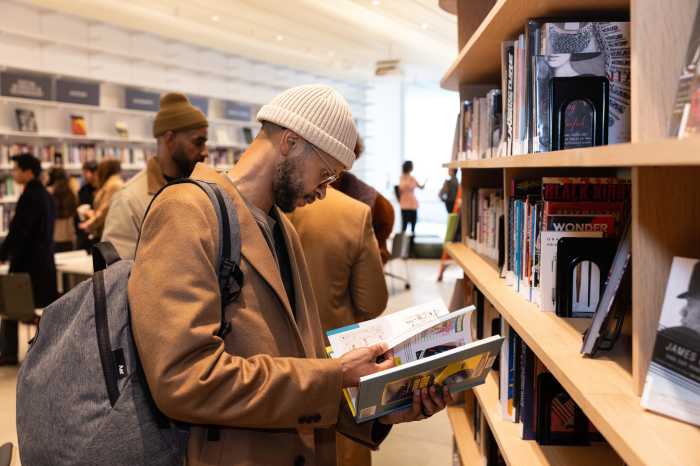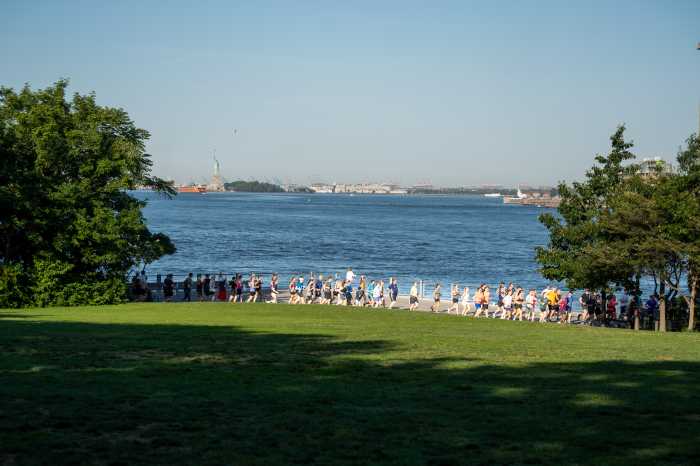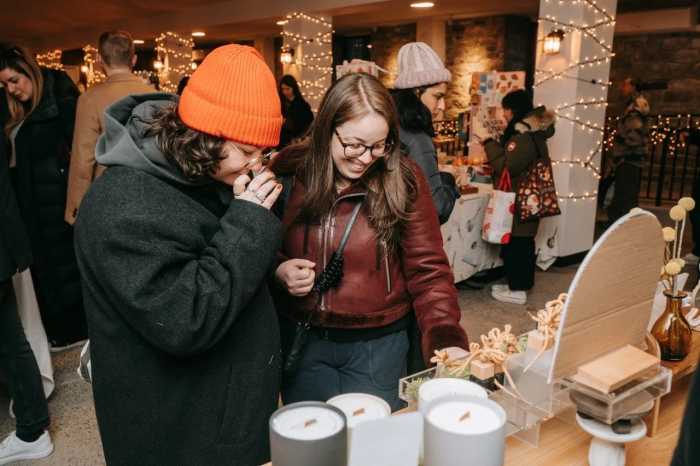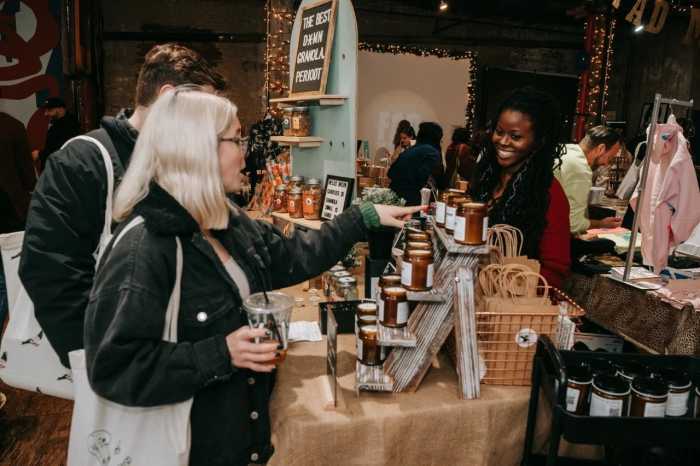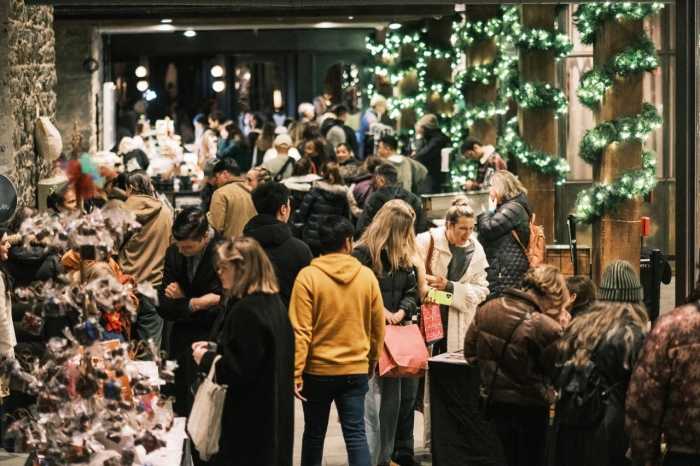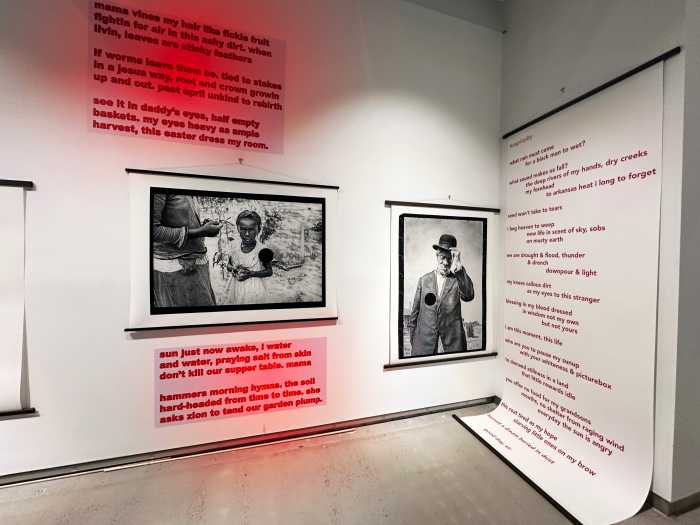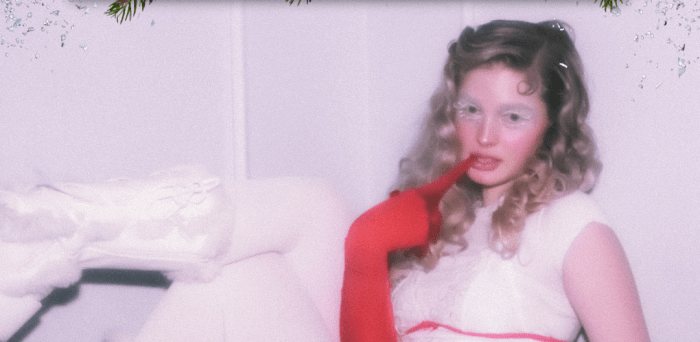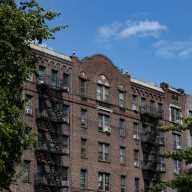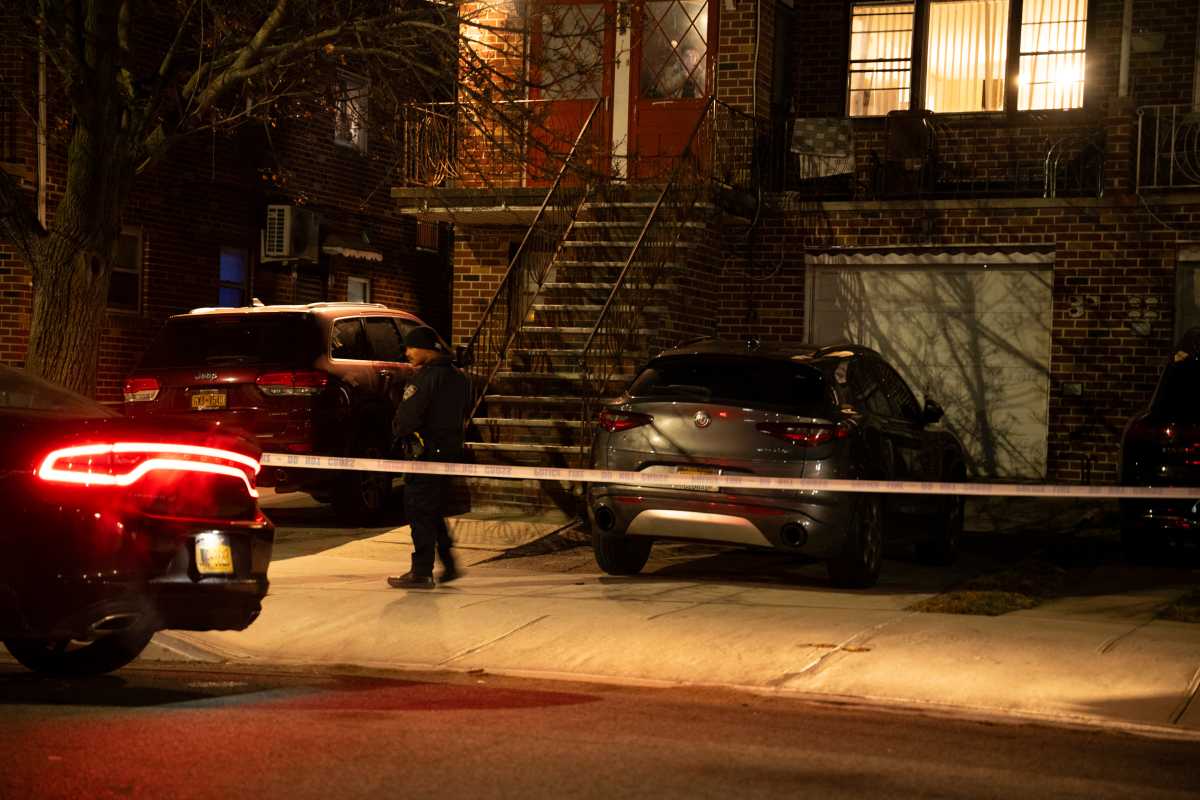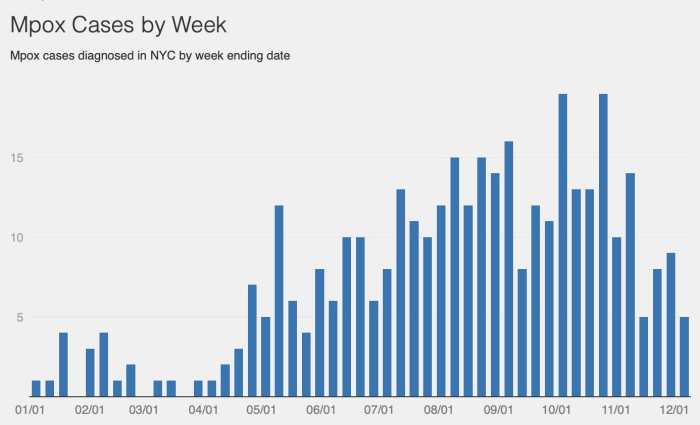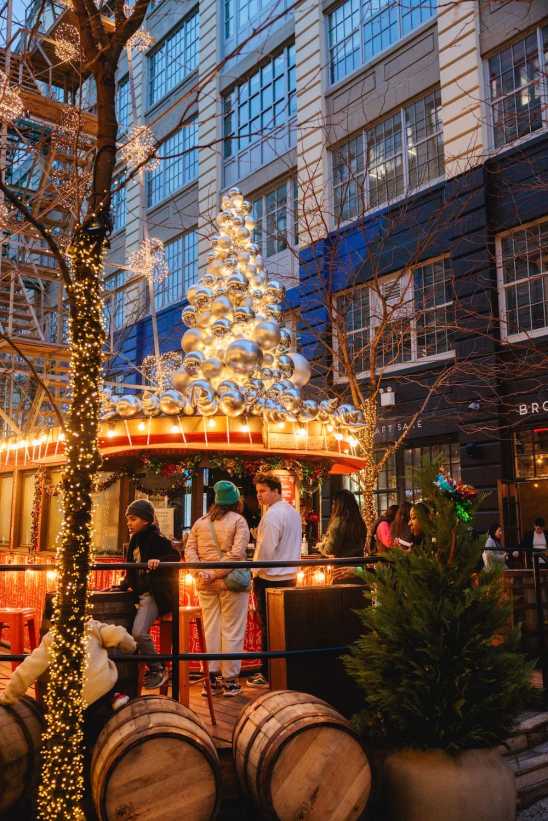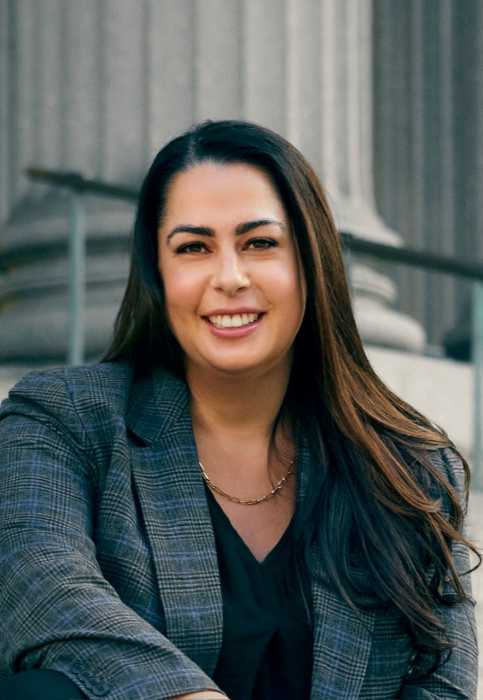Despite its diminutive size, the inaugural exhibit at the new
home of the Museum of Contemporary African Diasporan Arts packs
a wallop. Works by 15 well-known Brooklyn artists, ranging from
paintings to collage to mixed media to photography to sculpture,
are on display in a 1,800-square-foot facility that’s more akin
to a gallery in size than, say, the Brooklyn Museum.
But as MoCADA Founder and Executive Director Laurie Cumbo told
the assembled politicians and community members prior to the
museum’s ribbon-cutting, the institution is still a work in progress.
For the future, she envisions a bigger space, with a library
and other amenities.
"I want it to be a Mecca for people to come to, like Egypt,"
explained Cumbo. "We did it in Egypt and we can do it here
in Brooklyn."
Yet the museum has already made great strides: MoCADA initially
opened in 1999 on the fourth floor of a Bedford-Stuyvesant brownstone
owned by Bridge Street AWME Church, according to photographer
Chester Higgins Jr., who’s represented by two large black-and-white
photographs in the new exhibit.
A decade in the making, MoCADA’s current home, which opened on
Friday, May 19, is on the very accessible first floor of Fort
Greene’s James E. Davis 80 Arts Building (which was named for
the assassinated city councilman and houses more than a dozen
arts organizations). Long Island City-based Studiosumo created
the architectural design of the new facility, which features
a reception area/gift shop, flexible exhibition galleries and
storage space.
The first show
MoCADA’s first exhibit in its new home is "The Pulse of
New Brooklyn: A Review of Contemporary Black Art," a group
show of the borough’s artists conceived by a panel of 30 artists,
curators, critics and other city art professionals.
Truly, "The Pulse of New Brooklyn" is an all-star line-up.
Many of the artists will be familiar to those that flocked to
the Brooklyn Museum’s "Open House: Working in Brooklyn"
group show in 2004: Derrick Adams, Francks F. Deceus, Wangechi
Mutu, Otto Neals, Lorenzo Pace, Sol’ Sax, Dread Scott and Danny
Simmons. The exhibit opens with a portrait by Kehinde Wiley,
who was feted with a solo exhibition at the Brooklyn Museum in
2005.
Neals is not only represented by three of his female sculptures
and several collages, but the elder statesman is also the subject
of a portrait of him at work on a sculpture, painted by an artist
of the next generation, Donovan Nelson.
The artistic legacy of African-Americans is also the theme of
Pace’s installation, "Brooklyn Jazz Giants 1940-1950 Who
Lived and Worked in Brooklyn." Here, Pace has arranged a
band of square wood blocks, representing John Coltrane, Miles
Davis, Betty Carter and others, poised before real and improvised
instruments. Sweet details like pink high-heel shoes and a jaunty
hat give hints about which wooden "musician" is Carter.
Pace’s installation is one of two interactive works that invite
the viewer to put on headphones and listen to music while they
absorb the work. The other installation, Aisha Bell’s "Superwomen
in the Garden of my Subconscious" has 3-D female torsos
emerging from the gallery’s wall above a spray of artificial
flowers. The garden appears to be influenced by Pace’s previous
installation at the Brooklyn Museum, "Jalani and the Lock:
Family History Tree" and is another example of the passing
of the baton from senior artist to his successor. (Pace is perhaps
best known for his "Triumph of the Human Spirit," a
monument installed at the African Burial Ground in Lower Manhattan.)
"The Pulse of New Brooklyn" is also racing with hot
button topics such as gentrification and the war in Iraq. Scott’s
"Removed from View" is a multimedia sculpture featuring
a small folded card with the words "Artwork removed pending
investigation/U.S. Department of Homeland Security." The
card rests on a piece of linen inside a glass case. More than
one visitor stopped in their tracks on opening day, wondering
aloud if this was a symbolic gesture or another repercussion
of 9-11.
Willie Torbert’s quintessentially Brooklyn collage-on-masonite,
"People Moving InPeople Moving Out (There Goes the Neighborhood),"
juxtaposes an African-American family that may be in danger of
being pushed out, with a nonchalant, white, tattooed, pierced
hipster striding by their brownstone.
MoCADA’s mission is to "undertake the responsibility of
rewriting history in order to give a more accurate portrayal
of [people of African descent’s] contributions to the historical,
artistic and cultural landscape of the world" and certainly
this first show in the new location pays homage to the elderly
artists at work in the borough today while sharing the spotlight
with the young talents of tomorrow.
Currently, MoCADA mounts four exhibitions per year and organizes
30 public programs related to these exhibitions. (The museum
also curates the KIDflix Film Fest of Bed-Stuy.) MoCADA also
offers interactive tours for school groups as well as guided
tours for private groups as well as organizing an "Artist
in Residency" program.
MoCADA has plans for a series of art-making workshops in Fort
Greene’s Culyer Gore Park, for both children and adults, from
June through August, and "The Pulse of New Brooklyn"
exhibition will be followed by a show of pen-and-ink and tempura
drawings and sculpture, "The Middle Passage: White Ships,
Black Cargo," by Brooklyn native Tom Feelings on Sept. 1.
"The Pulse of New Brooklyn: A Review
of Contemporary Black Art" is on display at the Museum of
Contemporary African Diasporan Arts (MoCADA) [80 Hanson Place
at South Portland Avenue in Fort Greene] through Aug. 19. Suggested
donation is $4 adults, $3 students with valid ID and seniors,
and free for children age 12 and younger. For museum hours or
more information, call (718) 230-0492 or visit the Web site www.mocada.org.


